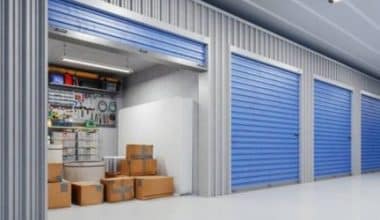For most people, home is more than the roof over their heads; it’s their personal sanctuary, monetary investment, and normally the cornerstone of family life. For something so emotionally, irretrievably valuable, and worth so much monetarily, its protection does become pretty essential. That’s where home insurance comes in, but not everyone needs just a general home insurance policy for the specific protection of their property. In this article, we are going to discuss what makes a tailored home insurance policy an important aspect and how several forms of coverage can deal with unique challenges to homeownership.
What Makes Home Insurance So Important?
Home insurance provides more than a safety net against life’s vagaries, such as fires and burglars; it also covers natural calamities. Moreover, it is a financial guardrail protecting investments from potentially devastating losses.
A well-designed home insurance policy protects the physical structure and contents of your home and liability arising from accidents on your property.
Most homeowners make the mistake of opting for a standard policy, probably without realizing that their particular circumstances may have much more in common with coverage that is specialized. Standard policies commonly cover basic perils but offer protection for a number of critical areas. Here’s why one-size-fits-all can leave you under-protected:
- Underinsured High-Value Homes: Valuable homes, probably because of location, size, or luxury finishes, could not be fully covered by their replacement value by a generic policy. Repairs or rebuilding in such homes can get outrageously costly beyond the coverage limit set usually, especially if high-value materials or custom craftsmanship are used.
- Expensive Personal Effects: Most standard policies automatically cap high-value items like jewelry, artwork, and electronic gadgets. As the owner of such expensive personal effects, you might want to get additional coverage if you don’t want to incur huge financial losses just in case some burglars break into your house or when some of your gadgets get damaged or ruined.
- Specialty Features: Anything from home automation systems to ‘green’ building materials that add value to today’s homes. Since most of these unique features are partially uninsured under a standard policy without proper protection, some out-of-pocket expenses may be incurred after a loss.
For those whose situation and circumstances are unique, tailored home insurance, such as high-value home insurance, would be wiser. The policy is designed to give broader protection with higher coverage limits to fully protect you in areas where a standard policy probably will not be sufficient.
Customizing Your Home Insurance: Things to Consider
To protect your house, it’s time to reassess your actual needs and tailor your insurance to those needs. The following are some of the most important areas to consider when tailoring a home insurance policy.
1. Dwelling Coverage Based on Real Replacement Costs
The most important portion of your home insurance coverage would probably be the dwelling coverage portion. This is what it would require for you to rebuild your house fully if that happened to be destroyed due to an underlying peril. The trouble is, most people think they’re adequately insured when their coverage limit is based on the market value of their home, necessarily what it would cost to replace it if you live in a high-construction-cost area or have made major improvements to your property.
Work with your insurer to determine the true cost of rebuilding. If you have a high-value home, you’ll need more than standard dwelling coverage to replace high-end materials, custom architectural elements, or other specialty features.
2. Comprehensive Personal Property Protection
This may be so with most home insurance policies, although the quantum of coverage for personal property may be widely disparate. The basic policy may cover only a few thousand dollars for jewelry, electronics, or even art. Such cover could be seriously inadequate for your home, should it house expensive collections or electronic gadgets.
Consider additional riders or endorsements that would extend coverage beyond what’s included for such items, or look into high-value home insurance policies that specifically tailor to the coverage needs of homeowners with a great deal of personal assets. These policies provide higher limits and sometimes also include other coverage options for unusual or expensive items.
3. Liability Protection for Modern Risks
House insurance mostly forgets liability coverage, but it is an integral part of house insurance. It protects you financially in case any injury happens to a visitor on your premises or if you damage somebody else’s property unintentionally. While most policies will have some form of liability protection, features such as swimming pools that raise your risk may cause more liability, particularly if one hosts events or has pets.
As it is, in today’s digital world, liability also extends to non-physical damages, such as defamation or invasion of privacy claims, thereby making adequate coverage increasingly necessary. If you have substantial assets, higher liability limits or even an umbrella policy could protect your financial well-being in the event of a lawsuit.
4. Additional Living Expenses (ALE)
Imagine that a fire or flood renders your home uninhabitable. Would you be able to pay for temporary housing while your property is being restored? That’s where additional living expenses coverage comes in.
ALE reimburses temporary living expenses should your home be so damaged that it requires repairs. These expenses may include things like hotel bills, food, and transportation. Sometimes, the amount of ALE coverage varies, which is important in the case of people owning very expensive homes, as limits on ALE show their actual living standards.
Your home might be in a part of the country that is especially vulnerable to particular kinds of natural catastrophes—earthquakes, floods, or hurricanes. Standard policies generally omit high-risk hazards, or the coverage may be insufficient.
People residing in disaster-prone areas are often obliged to obtain additional insurance, either by adding flood or earthquake insurance; usually, these are provided as stand-alone policies or as riders. Indeed, in high-value homes and offices located in disaster-prone areas, this extra layer of protection may prove crucial.
High-Value Homes: Why Specialized Insurance Matters
High-value homes come with risks and higher replacement costs. If your home falls into this category, you might want to seek a policy targeted at luxury properties. High-value home insurance provides extended coverage options, such as higher dwelling limits, extended replacement cost coverage, and protection for valuable possessions and unique architectural details.
These are highly detailed policies that consider the standards and special concerns of insuring extremely valuable homes. Some even cover high-end landscaping, custom construction materials, and other features specific to luxury homes, such as wine cellars and outdoor kitchens.
Closing Thoughts
Your house and lifestyle continuously change with time, which in turn changes your insurance needs. Periodic review of the home insurance policy will be very helpful in setting the proper coverage level, as the house will appreciate in value with time or improve with renovation proposals.
Do not let yourself be in a disaster situation before finding out that your coverage is not enough. From the small home to the high-value property, the best security for an investment is tailored with a specific policy.
Evaluate your needs with a knowledgeable insurance provider and consider policies like high-value home insurance to protect your home from life’s unexpected events.






